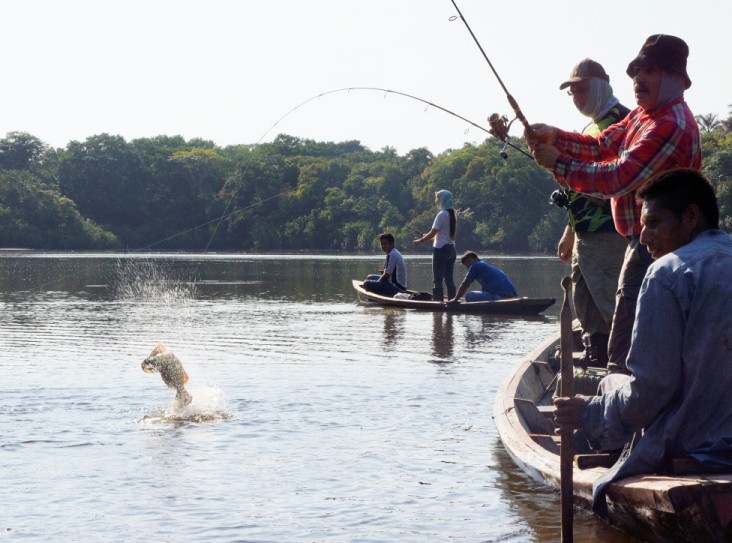
December 2016—Don Gilberto Flores used to awake each morning with a constant doubt, unsure if he would be able to find fish for his family’s breakfast.
“Before, there was indiscriminate logging. There were not enough fish because they were extracted en masse by people from outside our community,” explains the inhabitant of San Pedro, one of the communities surrounding the Tamshiyacu Tahuayo Community Regional Conservation Area, located in the Loreto region of Peru.
Fortunately, in 2008, the Peruvian Government designated the area between the Tamshiyacu and Tahuayo rivers a protected area in recognition of its beautiful landscapes, unique ecosystems, and the dependence of local people on natural resources. However, although this designation helped people like Flores to find fish to feed their families, they still could not pay for essentials like medicine or their children’s education.
In the midst of this dilemma, a solution was born: community rural tourism. After the community reached out to USAID and its Peru Bosques Project in 2014, four communities developed a tourism plan and established ties with regional authorities, the Loreto Regional Chamber of Tourism, and tour operators in Iquitos and Lima.
During 2015, USAID and the communities identified the most likely attractions for tourists and developed a business plan. In July, the communities legally created a new association, La Minga Turística, with five tourism products: sport fishing with return, hunting, hiking, volunteer service, and culinary and handicraft products.
“We want to be a strong association and give tourists all the facilities to make them feel comfortable. We want the tourists to leave happy. That's our goal,” says Gustavo Paima, president of the association. “And we do it also thinking about the future of our children: We want them to grow up healthy, strong and that one day soon, they will appreciate their association.”
In seven months of operation, the four communities that make up La Minga Turística have received 99 tourists from Argentina, France, the United States and England. Feedback has been positive.
“To see that the communities retain such a beautiful place and the fact that they offer the service themselves is very good because you see that the benefits stay with them,” said an English tourist.
La Minga Turística is one of the activities supported by USAID’s Office of Environment and Sustainable Development in Peru. The Tamshiyacu Tahuayo Community Regional Conservation Area conserves more than 420,000 hectares of primary forest, and conservation activities have been strengthened with the creation of La Minga Turística because the communities involved are located at the entrance of the reserve and have greater control over their territory.
The Peru Bosques Project, which ran from July 2011 to July 2016, was designed to achieve a legal and regulatory framework to protect Peru's forest sector, a sustainable conservation of biodiversity in the country’s Amazonian forests, and increased economic opportunities for businesses and native communities that make products from the forests’ natural resources.
LINKS
Follow @USAIDPeru, on Facebook, on Flickr







Comment
Make a general inquiry or suggest an improvement.